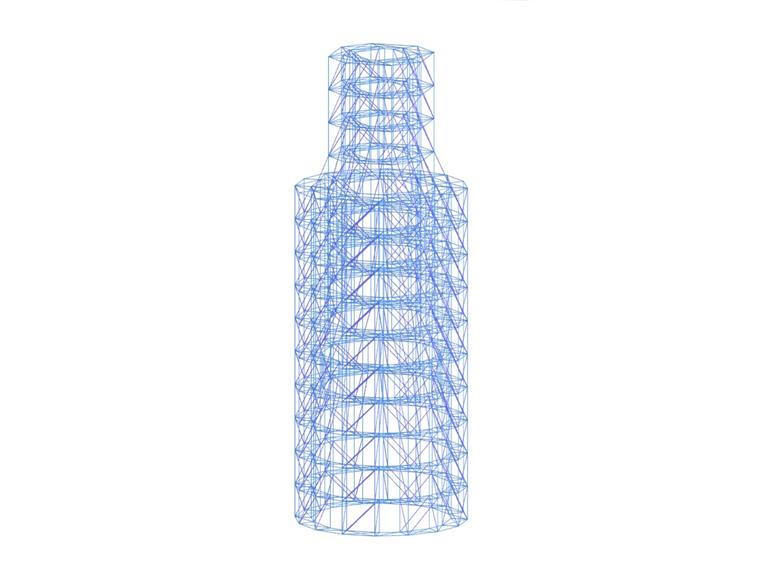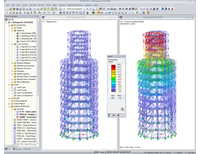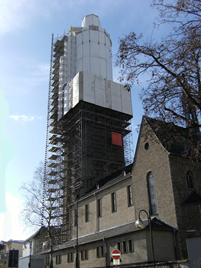To perform renovations for the steeple of the St. Martinus parish in Kerpen, Germany, a scaffold was required. This scaffolding was part of the entire construction project with an order volume of approximately €850,000.
The designers had to meet a special challenge, as the frame construction had to be set up at the spire top without applying pressure anchors, which are usually used in scaffolding.
Furthermore, the fact that the scaffolding was enclosed by a tarp was the reason that this frame construction had to be designed without a wind load reduction. The frame was built by means of modular scaffolding, a type of polygon with 16 edges ranging in height from 131 to 197 ft and another with 8 edges ranging from 197 to 230 ft.
Structural Design
RSTAB was used to design the spatial framework structure. The RSTAB add-on modules RSBUCK, RSIMP, and EL‑PL completed the calculation.
Generating Structure
First, the structure was modeled in AutoCAD design software. Then, the data were imported to RSTAB using the DXF interface and the relevant materials were assigned to the individual cross‑sections. The member hinges were simulated by nonlinear RSTAB member hinges according to building regulations.
Input of Loads
The wind loads were determined according to EC 1 and DIN 1054 T4. The analysis included the approach for a 16‑edge and an 8‑edge structure. Moreover, by way of comparison, the shape of a cylinder was tested.
The load combination which was finally decisive resulted from a combination consisting of the self‑weight and the maximum wind load (in scaffolding, the partial safety factor γF for load cases is always 1.5). By using the specific RSTAB function for generating loads, it was possible to perform an alternative analysis for different types of wind load applications with minimum effort.
Stability Analysis Software
The lowest buckling shape was determined with the help of the RSBUCK add‑on module. On the basis of this buckling shape, the RSIMP add‑on module generated imperfections for RSTAB automatically. The load cases for self‑weight, wind, and imperfections were put together in a load combination which was calculated according to the second‑order analysis. Finally, the elastic‑plastic design was performed with the RSTAB add-on module EL-PL.
| Structural Engineering | Planning and Structural Analysis Ingenieurbüro Klimpel, Bochum, Germany www.ib-klimpel.de |
| Scaffolding | General Contractor Geistert Gerüstbaulogistik GmbH, Duisburg, Germany www.geistert.de |
| Investor | Katholische Kirchengemeinde St. Martinus, Kerpen, Germany |




